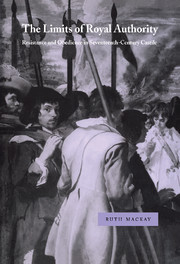2 - Making soldiers of townsmen
Published online by Cambridge University Press: 29 September 2009
Summary
Castile was an urban landscape in which a handful of cities spoke in the Cortes for the whole region and, as Helen Nader has pointed out, where everyone lived in a city, a town, or a village. Castilians' responses to military recruitment and the recourses they used to delay, alter, or alleviate the burden, were therefore defined by the social and jurisdictional confines or possibilities of their municipality, whether it was royal (realengo) or seigneurial. Negotiation over levies brought to light the limits and capacities of the municipality, the relative weight of its claims against those of other institutions, and the arguments it deemed important for establishing its rights.
We do not know what proportion of Castilians lived on realengo lands, though the figure of thirty percent is often accepted. This included inhabitants of the thirteen Cortes cities in the area under consideration, the cities' subject towns, those towns' subject villages, and towns that had attained their own liberty. It has also been estimated that eighty percent of Castilians lived in towns and villages (both realengo and seigneurial), and the remaining twenty percent lived in the cities. All municipalities were aware that they were losing inhabitants at an alarming rate; the demographic crisis of the first half of the seventeenth century reduced Castile's population by nearly twenty-five percent from the 1590s to mid-century, from 6,600,000 to around 5,000,000. Burgos' population during that period plunged from 10,500 inhabitants to just 2,700; Toledo's loss was even greater, from 80,000 to 10,000. The great plague at the turn of the century alone killed an estimated ten percent of all Castilians.
- Type
- Chapter
- Information
- The Limits of Royal AuthorityResistance and Obedience in Seventeenth-Century Castile, pp. 61 - 98Publisher: Cambridge University PressPrint publication year: 1999



